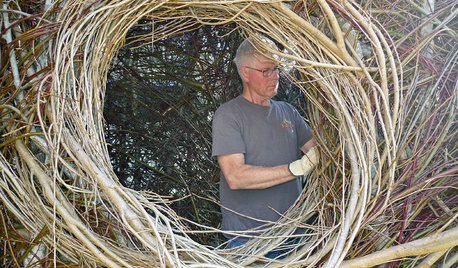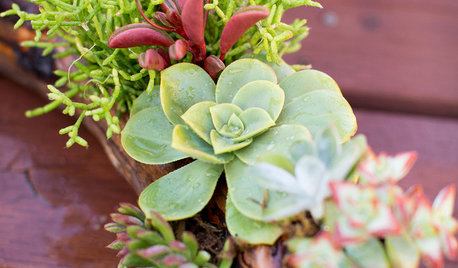processing coconut husks
joff
18 years ago
Related Stories

GREEN DECORATINGGo Cuckoo for Coconut Furniture and Surfaces
Crack open a lesser-known ecofriendly design option: tiles, flooring, tables and more made from coconut shell and palm wood
Full Story
LANDSCAPE DESIGN5 Reasons to Consider a Landscape Design-Build Firm for Your Project
Hiring one company to do both design and construction can simplify the process. Here are pros and cons for deciding if it's right for you
Full Story
GARDENING AND LANDSCAPINGHow to Make a Pond
You can make an outdoor fish paradise of your own, for less than you might think. But you'll need this expert design wisdom
Full Story
LIFE10 Steps for Saying Goodbye to Sentimental Objects
Are keepsakes cluttering your space and your life? Consider this approach for letting go and moving on
Full Story
WHITEHow to Pick the Right White Paint
White is white, right? Not quite. See 8 white paint picks for 8 very different effects
Full Story
EVENTSDesign Calendar: Jan. 20-Feb. 10, 2012
Las Vegas Market, Austin Modern Home Tour and more: See what's on the Houzz list of things to see and do
Full Story
DECORATING GUIDES5 Ways to Make Your First Home Amazing
Design prodigy Kyle Schuneman scatters rules to the wind and shares his tips for making a first apartment or house stylishly memorable
Full Story
DECORATING GUIDESHouzz Tour: Happy Days Are Here Again in a Miami Apartment
The colors of Biscayne Bay, an owner’s fond memories and the groovy spirit of the 1970s inspire a bright redesign
Full Story
DIY PROJECTSMake a Beautiful and Long-Lasting Driftwood Centerpiece
Add succulents to found wood for an easy arrangement that looks straight from a designer florist's shelf
Full Story
FARM YOUR YARDHow to Grow Vegetables in Containers
Get glorious vegetables and fruits on your patio with a pro’s guidance — including his personal recipe for potting mix
Full StoryMore Discussions







onewebfoot
onewebfoot
Related Professionals
Eden Prairie Landscape Architects & Landscape Designers · Mitchellville Landscape Architects & Landscape Designers · Stamford Landscape Contractors · Bristol Landscape Contractors · Canby Landscape Contractors · Cicero Landscape Contractors · Conroe Landscape Contractors · Hurricane Landscape Contractors · Mastic Beach Landscape Contractors · Paramus Landscape Contractors · Waipahu Landscape Contractors · Wareham Landscape Contractors · Northlake Landscape Contractors · Vadnais Heights Landscape Contractors · La Puente Outdoor Lighting & Audio Visual SystemsjoffOriginal Author
onewebfoot
parkman500_yahoo_com
jimr007
edurink
kaiser_salih_yahoo_com
pgborras_yahoo_com